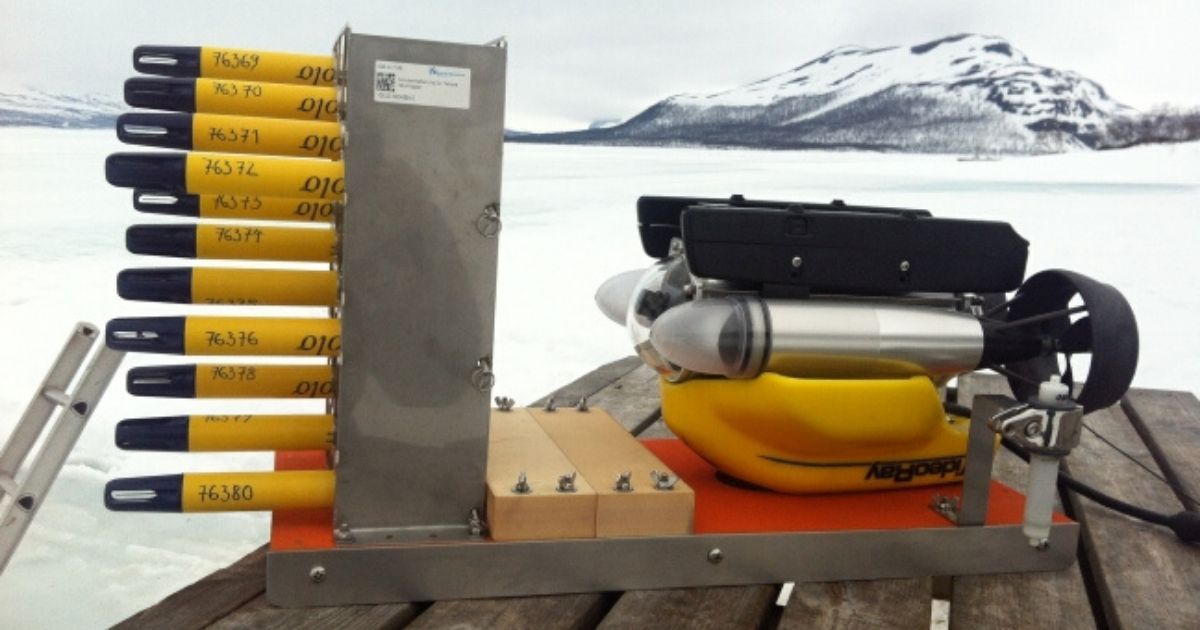RBR array collects fine-scale temperature measurements in the strongly stratified centimeters-thick boundary layer under seasonal lake ice
Researchers from Germany, Russia and Finland deployed 12 RBRsolo³ T temperature loggers into an ice-covered lake in northern Finland to study heat transfer at the ice-water interface. The fine-scale measurements they collected are helping them to identify the role of turbulence in the boundary layer.
The 2018 study, “Turbulent mixing and heat fluxes under lake ice: the role of seiche oscillations”, published in the journal Hydrology and Earth System Science, aimed to measure the vertical distribution and short-term variability of water temperature at the ice-water interface – a strongly stratified and an extremely thin water layer just below the ice base.
To measure temperature in the ice-water interface of Kilpisjärvi, a midsize lake in the Scandinavian Mountains of northwestern Finland, a platform supporting 12 vertically-distributed RBRsolo³ Ts was deployed just below the seasonal ice. The loggers were spaced by two centimeters, the bottom logger at 27 cm and the topmost just 5 cm from the ice base. Georgiy Kirillin, of the Leibniz-Institute of Freshwater Ecology and Inland Fisheries, Germany, and corresponding author on the publication, describes the setup as “a temperature registration platform with 12 RBRsolo³ T|fast16 fast-response temperature loggers equipped with stainless steel sledges on the upper side and attached to a VideoRay Pro4 remotely operated vehicle.”
The platform was deployed through a hole in the ice. To ensure an undisturbed location, it was remotely positioned up to 150 m from the drill site. Temperature was measured continuously at 2 Hz during deployments of 24 to 48 hours.
Kirillin has worked with RBR loggers for fifteen years, originally for what he calls the “optimal ratio” between accuracy, stability, and value. He chose the RBRsolo³ T|fast16 logger for its fast sampling rate and compact size.
RBRsolo³ T temperature loggers can help with your deployment, as can our full suite of compact loggers. Contact us for help or more info.
Story by RBR





